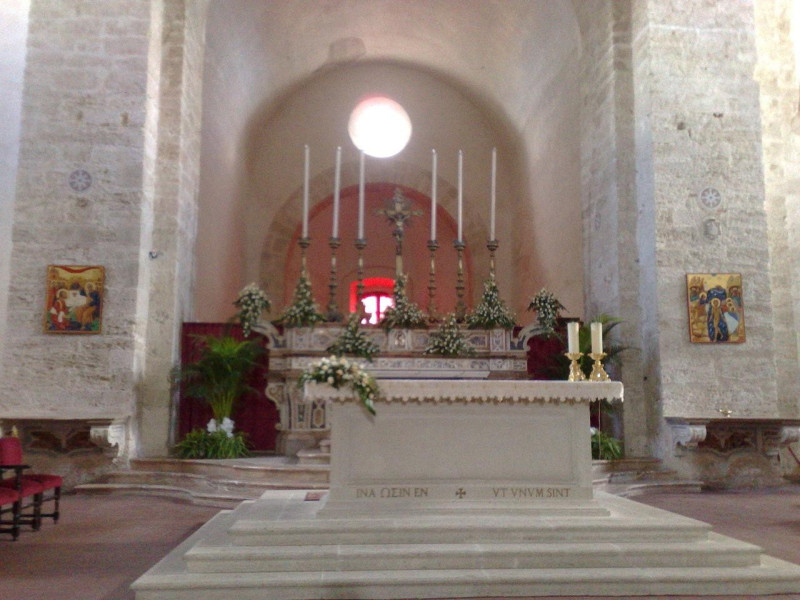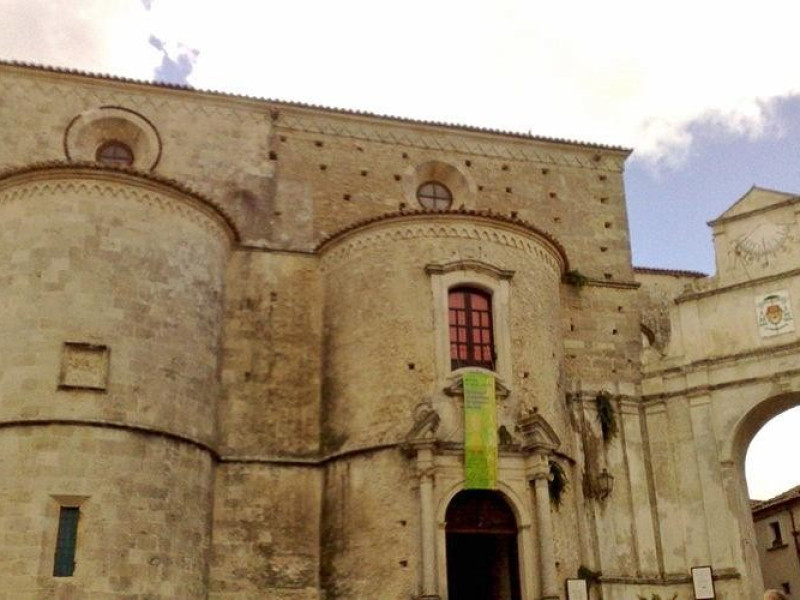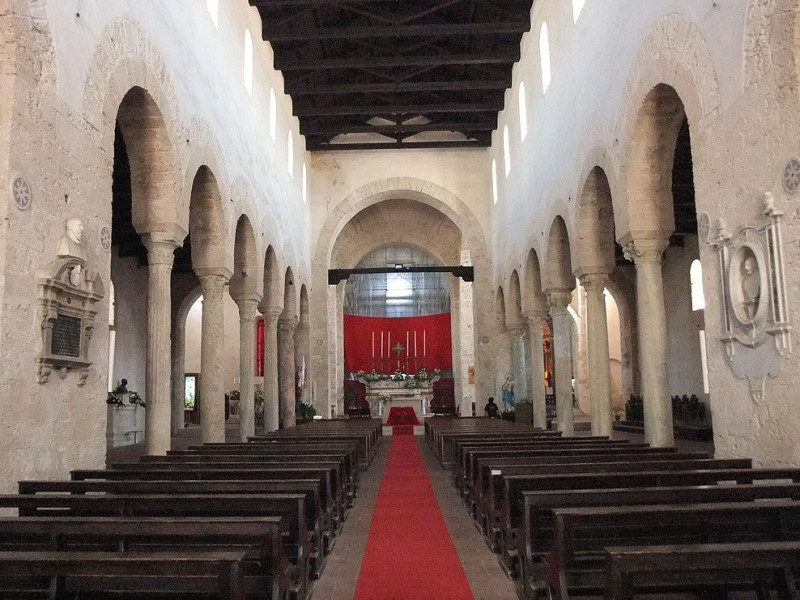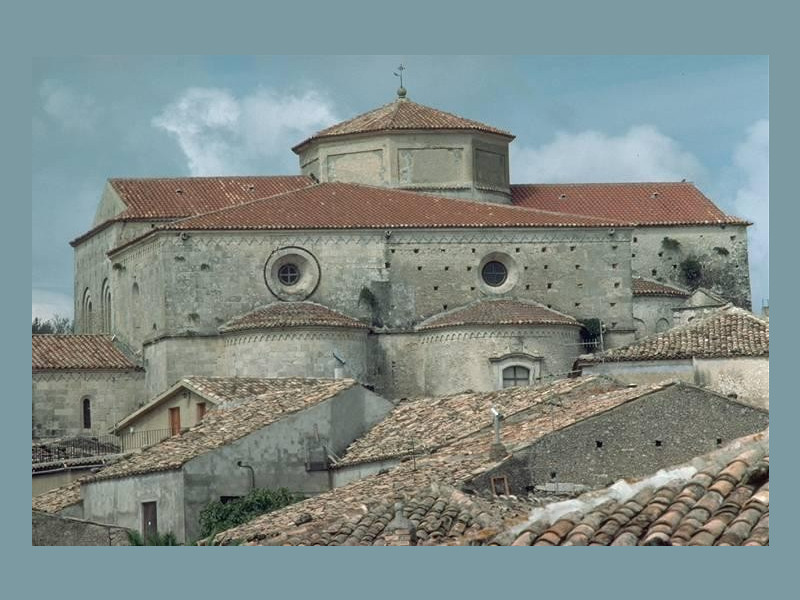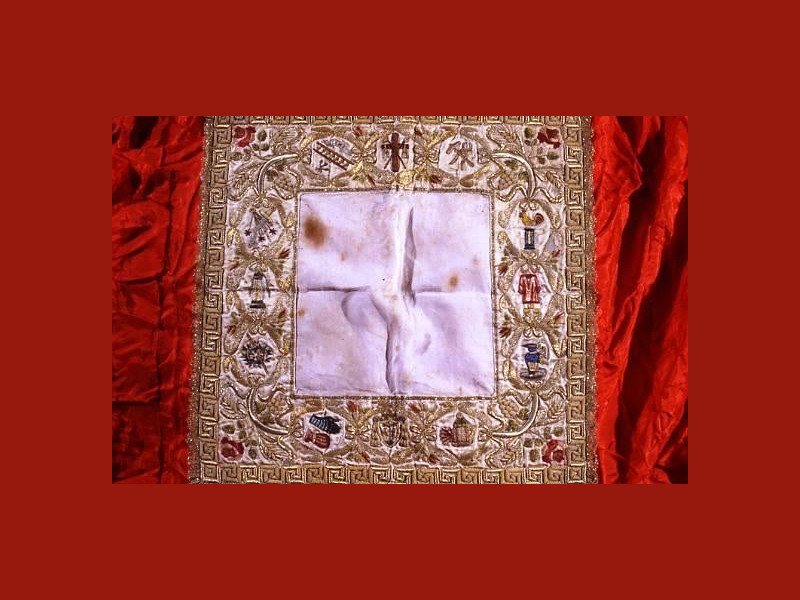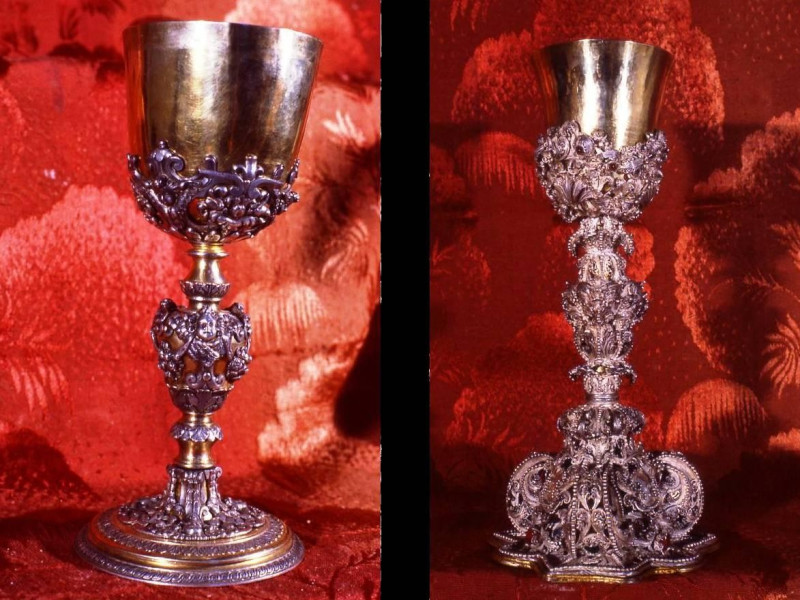Cattedrale di Santa Maria Assunta
Cathedral of St. Mary Assumed in Gerace is one of the largest and most important buildings of Norman Calabria, declared "Architectural Heritage of National Interest". Its history is a succession of damage and collapse, culminating with the 1783 earthquake and the consequent abandonment, followed by the restoration and revival. The construction began in the late Byzantine period and ending in Norman times. In 1222 a second consecration dates back to the presence of Emperor Frederick II of Swabia. The exterior, in Romanesque style, gives the building the appearance of a fortress in limestone, with two of the three apses of semi-cylindrical shape. On the central apse opens a wooden portal of the nineteenth century concentric arches, surmounted by a window. The interior is a Latin cross: three great naves are separated by two rows of ten columns in polychrome marble and granite, all different; the ceiling is a trussed dark wood; the main altar, Baroque in polychrome marble, is the work of Palazzotto and Amato. Inside there are important funerary monuments, including: the sarcophagus of Count Giovanni Battista Caracciolo, the Gothic Chapel of SS. Sacrament (1431) and the Byzantine crypt (Greek cross, with a core of the eighth century), with the Chapel of Our Lady of Itria. Deserves special attention the relief "Incredulity of St. Thomas" (1547), by Gagini. Among the treasures: a tabernacle for the sacred wood gilded silver, precious stones factory in Jerusalem, a great nineteenth-century monstrance, a filigree chalice of 1726, a silver statue of the Assumption (1722), vestments and fine fabrics.
